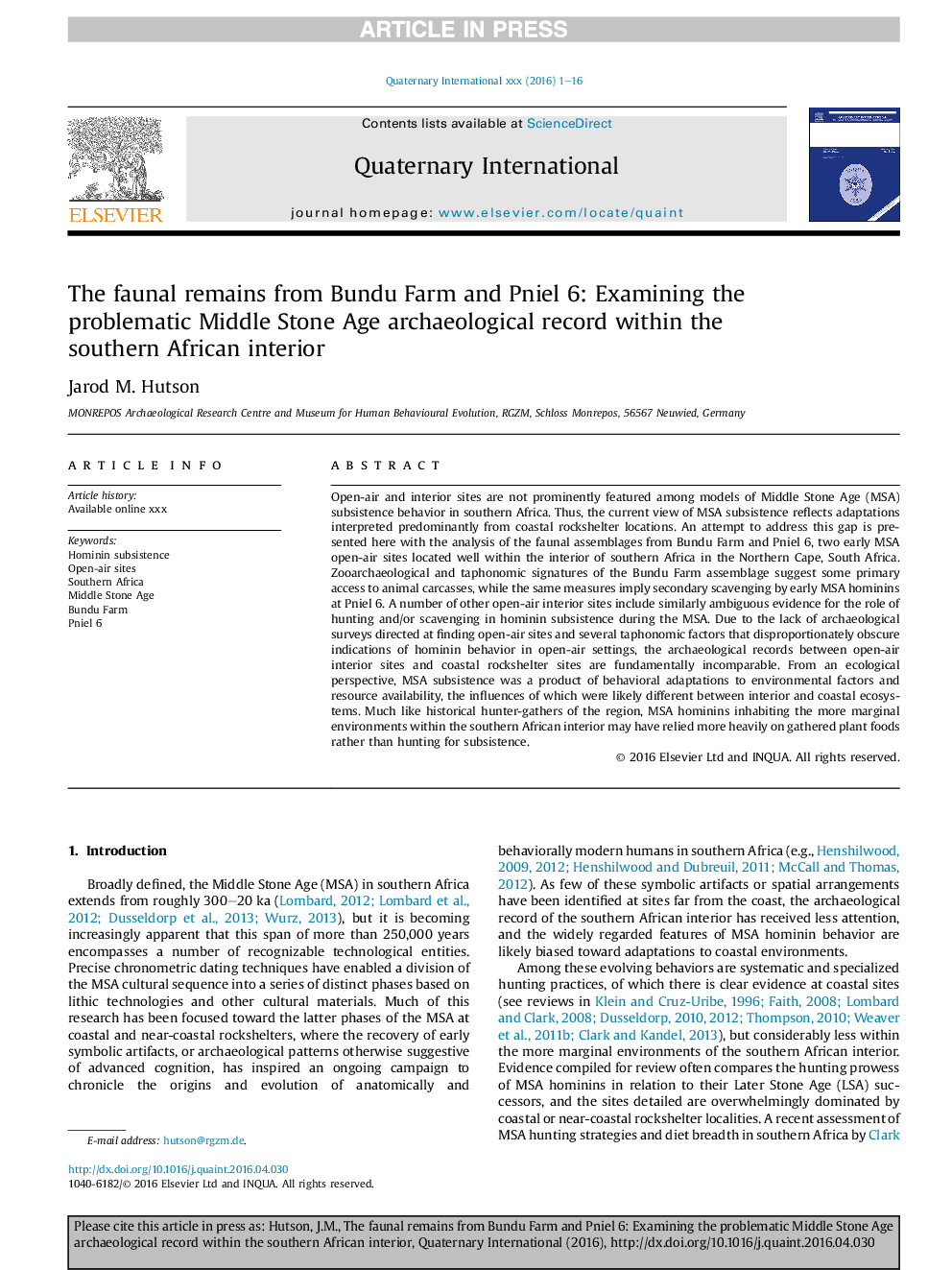| Article ID | Journal | Published Year | Pages | File Type |
|---|---|---|---|---|
| 7450636 | Quaternary International | 2018 | 16 Pages |
Abstract
Open-air and interior sites are not prominently featured among models of Middle Stone Age (MSA) subsistence behavior in southern Africa. Thus, the current view of MSA subsistence reflects adaptations interpreted predominantly from coastal rockshelter locations. An attempt to address this gap is presented here with the analysis of the faunal assemblages from Bundu Farm and Pniel 6, two early MSA open-air sites located well within the interior of southern Africa in the Northern Cape, South Africa. Zooarchaeological and taphonomic signatures of the Bundu Farm assemblage suggest some primary access to animal carcasses, while the same measures imply secondary scavenging by early MSA hominins at Pniel 6. A number of other open-air interior sites include similarly ambiguous evidence for the role of hunting and/or scavenging in hominin subsistence during the MSA. Due to the lack of archaeological surveys directed at finding open-air sites and several taphonomic factors that disproportionately obscure indications of hominin behavior in open-air settings, the archaeological records between open-air interior sites and coastal rockshelter sites are fundamentally incomparable. From an ecological perspective, MSA subsistence was a product of behavioral adaptations to environmental factors and resource availability, the influences of which were likely different between interior and coastal ecosystems. Much like historical hunter-gathers of the region, MSA hominins inhabiting the more marginal environments within the southern African interior may have relied more heavily on gathered plant foods rather than hunting for subsistence.
Related Topics
Physical Sciences and Engineering
Earth and Planetary Sciences
Geology
Authors
Jarod M. Hutson,
